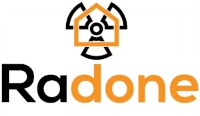Measuring Radon
In Minnesota, 2 out of 5 homes have radon levels that pose a significant health risk. Nearly every county in Minnesota is in a high or extreme radon zone. This is because of the geology of Minnesota as well as how our homes are built to withstand the Minnesotan winters.
The Minnesota Department of Health recommends that all Minnesota homeowners test their homes for radon. A radon test is the only way to find out how much radon is in your home and if you and your family are at risk. You can easily find radon test kits at your local hardware store or call a licensed radon professional to test it for you. The results of a properly performed radon test will help you determine if you need to take further action to protect yourself from the health risks of radon.
There are two types of testing devices
Short-Term:
Short-term tests measure radon levels for 2 to 7 days. Generally, either charcoal absorption tests (from your local hardware store) or a CRM (Continuous Radon Monitor) from a radon professional. While short-term tests offer a quick and inexpensive way to “screen” for radon in your home, they do not measure the annual average level of radon. This is what we do at Radone. We specialize in using CRMs to accurately and quickly determine radon levels in your home.
Long-Term
Long-term tests determine the average concentration for a minimum of 90 days. Long-term tests are the best way to estimate the average amount of radon in the home during the year, particularly if a year-long test is done to include both heating and cooling seasons.
EPA Recommended Steps
- Take a short-term test. If your result is 4 pCi/L or higher, take a follow- up test to confirm the result (Step 2).
- Follow with either a long-term test or a second short-term test. For a better understanding of your year-round average radon level, take a long-term test. If you need results quickly, take a second short-term test. We recommend doing two short term-tests at the same time or using a CRM to reduce the waiting time for your results and start your action plan (Step 3).
- If you followed up with a second short-term test, consider fixing your home if the average of your first and second test is 4 pCi/L or higher. If you followed up with a long-term test and your test result is 4 pCi/L or higher you are more certain of the need to fix your home. Remember any amount of radon is unsafe, so consider taking action even if your levels are below 4.0pCi/L.
Where can I find radon test kits?
Radon test kits are sold at most hardware or home supply stores. You may also be able to procure them from your local health department. You may also obtain your test kit through Radone. If you use a Radone test kit your testing fee with be refunded if you choose us to fix your radon problem. For more information on where to find test kits or the best ones to use, contact your local health department or Radone.
Radon Testing
Residential Testing: A 48 to 72- hour test utilizing a Continuous Radon Monitor (CRM) placed in your home by a licensed Radone professional. Test results available after completion of the testing period with a hard copy sent to the home owner for their records.
Real Estate Radon Testing: a 48-hour test utilizing a Continuous Radon Monitor (CRM) for Real Estate Transactions. Placed in the residence by a licensed Radone professional with test results available on site. A hard copy is sent to the new home owners for their records.
Short-Term Testing: We also offer short term test kits which offer a quick inexpensive way to test your home on your own. These tests take 3-7 days and need to be sent to a 3rd party lab to obtain your results. Specific testing conditions apply to these tests and the instructions must be followed exactly or the test results will not be valid.
Long-Term Tests: Long-Term tests are the best way to estimate the average amount of radon in your home during the year, particularly if the year-long test includes both heating and cooling seasons. We at Radone do not recommend doing a long-term test due to the time it takes to get results, but if you are curious to see the change in radon levels between summer and winter, we can help you find the best test for your situation.
Initial Short-term Test
Less than 2.0 pCi/L – Consider performing a long-term test
Greater than 4.0 pCi/L – Perform a second short-term test
Second Short-term Test
Less than 4.0 pCi/L – Perform long-term test
Mitigation strongly recommended if averaged test result is 4.0 pCi/L or greater



